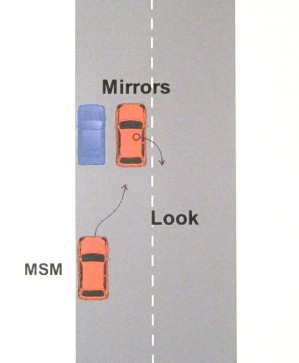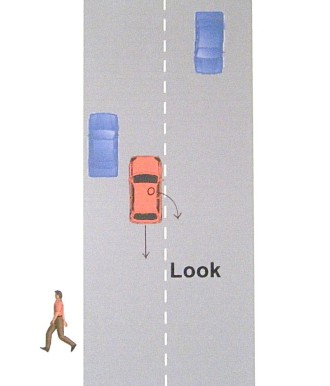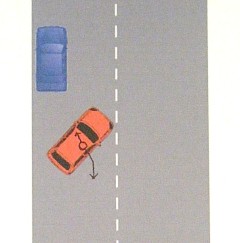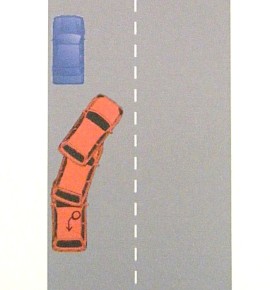Reverse Park
The Examiners Instructions:
"Pull up on the left just before the vehicle in front, leave yourself plenty of room to move off. What I would like you to do now is the Reverse Park Exercise. Drive forward and pull up alongside the vehicle in front, with your wheels straight. Then I would like you to reverse back in behind the vehicle, keeping reasonably close to and parallel with the kerb. Try to complete the manoeuvre in approximately two car lengths".
What you need to do:
- Usual routine for moving off. Try to pull up alongside the vehicle - not too far forward and about a couple of feet away from it.
- Once you have stopped, handbrake on and straight into reverse. That way anyone coming up behind you will know what you are doing.
- Before you start to reverse have a good look around including your right blind spot.
- After your observations, creep the car back, looking out of the back window.
- When the left hand door mirror is roughly level with the end of the parked car, stop. This is your point of turn.
- As always at points of turn you must have a good look round including your right blind spot.
- When it is safe, creep the car back, simultaneously steering one circle to the left.
- Using the left door mirror, when it looks like the end of my door handle touches the kerb, stop. This is your reference point.
- Now comes the tricky bit! Remember it's all about how you match the speed of the car creeping back to the speed of your steering.
- Speed too fast, steering too slow = hitting the kerb.
- Speed too slow, steering too fast = turning in wide.
- You have to get the car creeping back at a steady speed whilst steering full lock to the right also at a steady, but consatnt pace.
- You will need to look into the left door mirror as well as out of the back window to help you judge how it's going. No two roads are the same and you may need to adjust your speed and or steering if it looks like you are too close or wide.
- You can't go back further than a cars length from the parked car, but there is no limit to the number of times you can shunt backwards and forwards, if you need to get in a little closer to the kerb.
- This is difficult to explain in text as it's all about judgment. You just need lots of practice to get it right.





